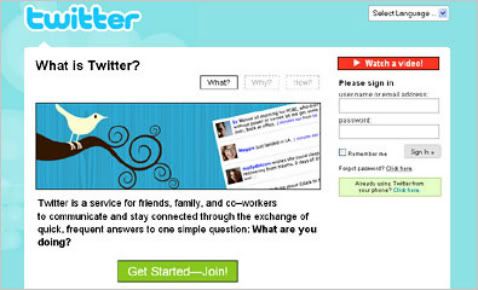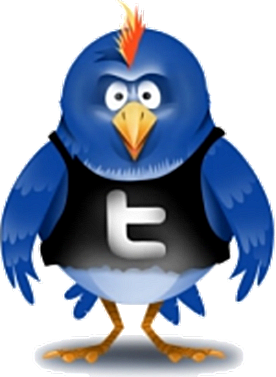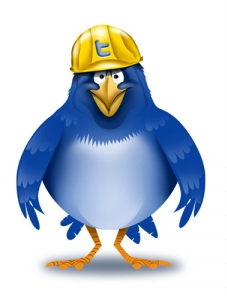
Twitter's rapid growth made it the object of intense interest and a fair amount of ridicule, as it was derided as high-tech trivia or the latest in time-wasting devices. But its use in Iran in the wake of the disputed presidential election of June 2009 to organize protests and disseminate information in the face of a news media crackdown brought it new respect.
"Twitterers" or "tweeters" send and receive short messages, called "tweets," on Twitter's Web site, with instant messaging software, or with mobile phones.
When a user is logged in through the Web or a cellphone, it asks one simple question, "What are you doing?" Users answer in 140 characters or fewer. While some of these tweets have the profundity of haiku, most are mundane, like "Sure is pretty out tonight" or "My eyes itch. I am very aggravated."
Unlike most text messages, tweets are routed among networks of friends. Strangers, called "followers," can also choose to receive the tweets of people they find interesting.
With more than 200 million accounts, Twitter, is part of an elite group of social web start-ups that have flourished in recent years by rapidly attracting users. But while peers like Groupon and Zynga are hurtling toward the public markets, Twitter is holding back.
Marketing Tool
In its short history, Twitter has become an important marketing tool for celebrities, politicians and businesses, promising a level of intimacy never before approached online, as well as giving the public the ability to speak directly to people and institutions once comfortably on a pedestal.
But someone has to do all that writing, even if each entry is barely a sentence long. In many cases, celebrities and their handlers have turned to outside writers - ghost Twitterers, who keep fans updated on the latest twists and turns, often in the star's own voice.
It is not only celebrities who are forced to look to a team to produce real-time commentary on daily activities, but also politicians like Ron Paul, who have assigned staff members to create Twitter posts and Facebook personas. Barack Obama's presidential campaign used Twitter, Facebook and YouTube.
Organizing Tool
In 2009, people in Iran and Moldova created their own searchable tags on Twitter to organize protests against their governments and share information with each other and the world. In April, Moldovans used the network to rally more than 10,000 young people against their country's Communist leadership. And in June, Iranian opposition supporters angry over presidential election results used Twitter and other forms of new media to share news on rallies, police crackdowns on protesters, and analysis.
With the authorities blocking text-messaging on cellphones, Twitter has become a handy alternative for information-hungry Iranians. While Iran has also tried to block Twitter posts, Iranians are skilled at using proxy sites or other methods to circumvent the official barriers.
In a notable moment during the Iranian protests, State Department official e-mailed Twitter to request a delay in scheduled maintenance of its global network, which would have cut off service while Iranians were using Twitter to swap information and inform the outside world about the mushrooming protests around Tehran.
Twitter complied with the request and briefly postponed its upgrade. The episode demonstrated the extent to which the Obama administration views social networking as a new diplomatic tool. Secretary of State Hillary Rodham Clinton talks regularly about the power of e-diplomacy, particularly in places where the mass media are repressed.
Remaining Private
At present, Twitter makes the bulk of its money from an advertising platform that features “promoted tweets.” The program, which was rolled out in April 2010, displays sponsored messages in users’ feeds or keyword searches.
The microblogging service has no problem luring deep-pocketed investors. In July 2011 the company was in the the process of raising $400 million in a deal that values the company at $8 billion.
According to Rory Maher, an analyst for Hudson Square Research, the company makes about $200 million a year from online advertising and is close to profitability. At those levels, a valuation of $8 billion — or roughly 40 times sales — is difficult to justify, he said.
The financing round, which will be split into two portions, will be led by DST Global, the investment firm headed by the Russian billionaire Yuri Milner. Previous investors, including the venture capital firm Kleiner Perkins Caufield & Byers, will also participate
SOURCE:




No comments:
Post a Comment